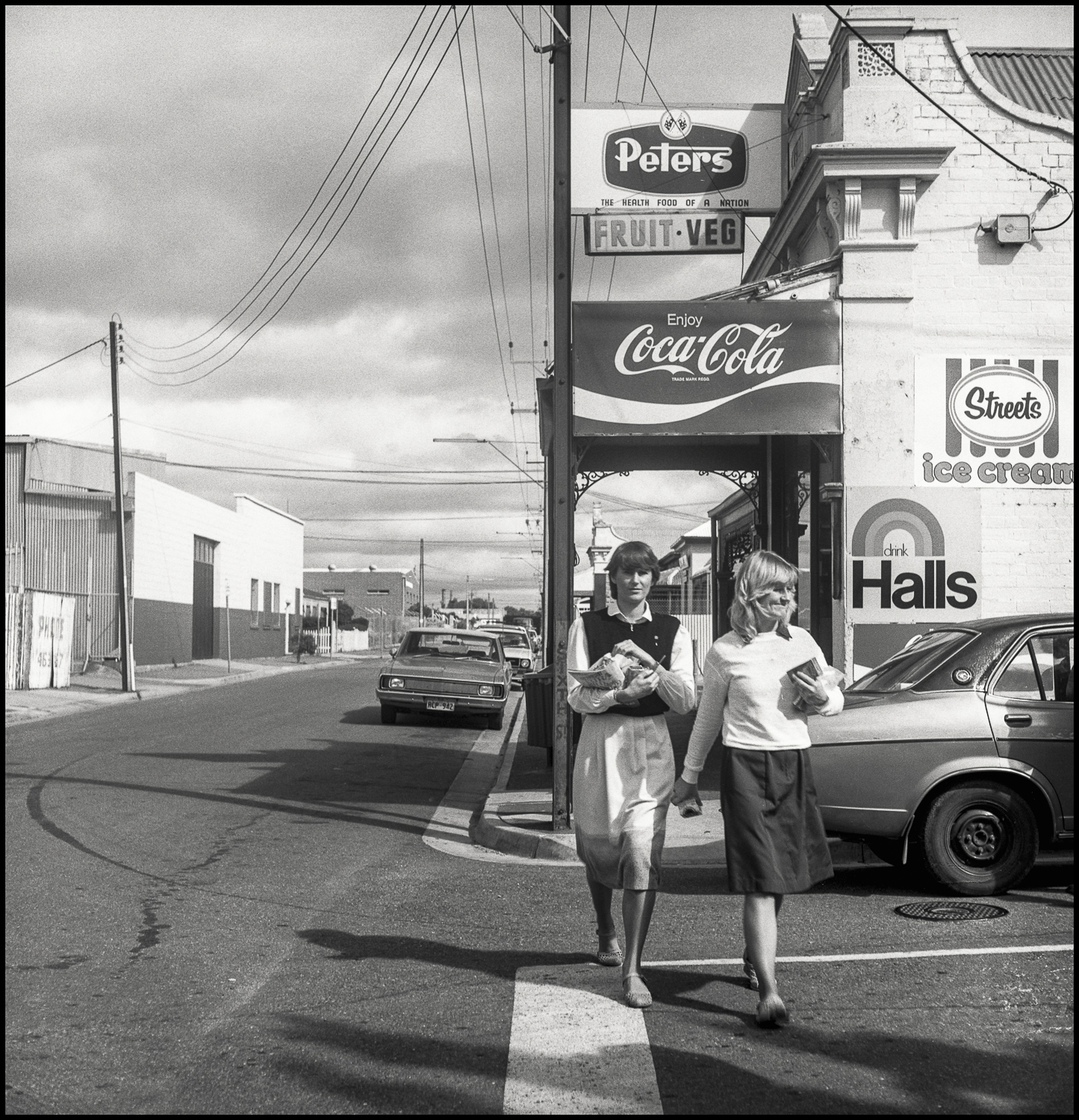The Australian photographic context or reference point for the street work in the Bowden project is probably the Candid Camera: Australian Photography 1950s-1970s exhibition at the Art Gallery of South Australia in 2010. This was curated by Julie Robinson, the Art Gallery’s Senior Curator of Prints, Drawings & Photographs. Candid in this context presumably means the photography is done in such a way that the subjects are not aware they are being photographed at the exact moment the image is being made.
The exhibition included work by familiar photographers: Max Dupain, David Moore, Jeff Carter, Max Pam, Robert McFarlane, Mervyn Bishop, Rennie Ellis, Carol Jerrems and Roger Scott. It covered the photojournalism of the 1960s, social documentary, as well as subjective personal street photography of the 1970s. Marcus Bunyan’s wonderful Art Blart blog has some of the images in the exhibition.
Bowden’s factories and warehouses were still in existence in the 1980s, and the lunch hour between 12 and 1pm saw a fairly active street life as people walked to and from the local corner deli to buy their lunch. Representing this everydayness in terms of cultural value is what commercial imagery would ignore, flatten and dismiss. Cultural value means that the photography has benefit for people in some way, or engages them in some way regardless of whether it’s sellable.

The Bowden street photography was black and white, straight images and traditional analog. It was fairly straight forward in its realist approach and rhetoric to representing a decaying, vanishing Australia. It concern with memories of this inner suburb meant that the project didn’t buy into two central strands of common understanding of documentary in the 1930s or 1940s. This was the “universal language” myth (photography constitutes a language in its own right that can communicate to all the people on the planet), and the transparency of representation myth (a photograph “was what it was” and it had a direct relationship with seeing.)
The exhibition catalogue for the Candid Camera exhibition says that the exhibition is a survey of Australian documentary photography in the post war period. It explores the influence of international trends towards social documentary and photojournalism on local photographers. It demonstrated the interest of successive generations of photographers in creating unposed, spontaneous and candid records of contemporary life.
The exhibition’s main theme was to illuminate a common visual language for documentary photography, involving visual puns, juxtapositions, observations of absurd situations and the pursuit of the ‘decisive moment’ as popularised by the French photographer Henri Cartier-Bresson. The exhibition’s research contribution was to identify the ways in which Australian photographers used these elements in widely varied ways. It is street photography that is enigmatic, quirky and more often than not surreal, not documentary photography.
The Bowden street work was straightforward in that I had no understanding of the American modernist playing around with the visual language of documentary photography, involving visual puns, juxtapositions, observations of absurd situations. Even though I’d rejected nineteenth century positivism and conception of the transparency of photographic language, I didn’t really understand what Lee Friedlander and Garry Winogrand were doing with their street photography. New York was a very long way from Bowden, Adelaide in the 1980s.
It struck me that the curators and directors of Australian photography institutions and contemporary art spaces were responding to a cultural cringe in Australia in the 198os. They used the uplift in public funding their modus operandi to establish Australian photography as world class, to establish an international profile for photography in Australia, and curated Australian photography works to ensure that it was part of the international festivals and biennales. International standards in the 1980s still meant US formalist modernism and the modernist notion of galleries as a clear white space in which art is placed with some kind of clinical neutrality and in which cultural experimentation takes place.
The Bowden project was produced completely outside galleries and the art world and it remains outside the public gallery system that often recycles the same old faces and images.
Leave a Reply